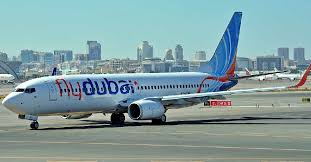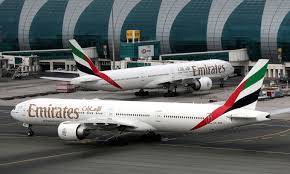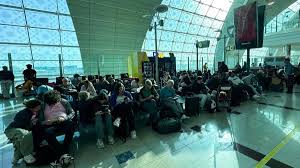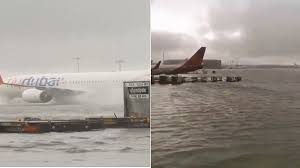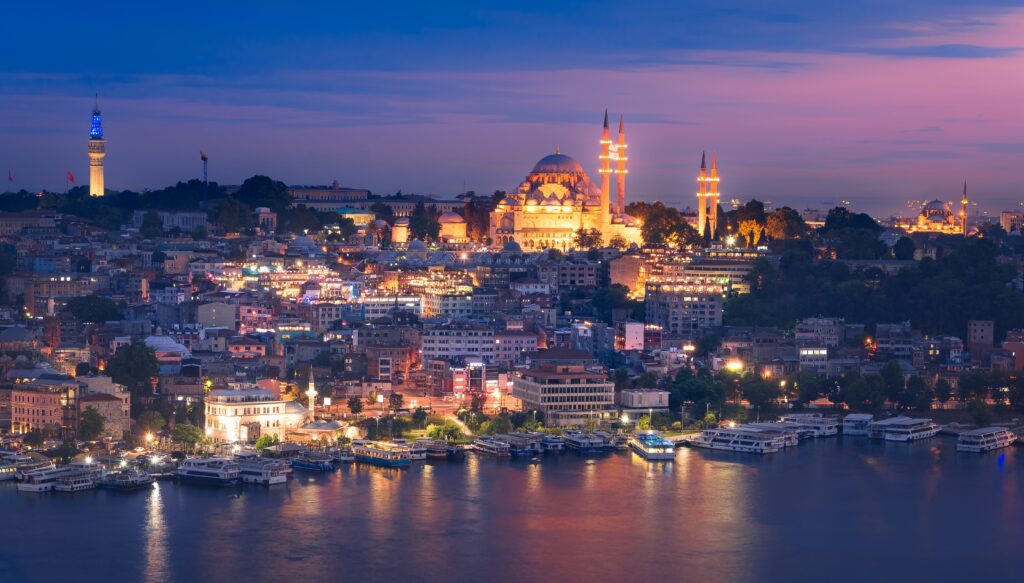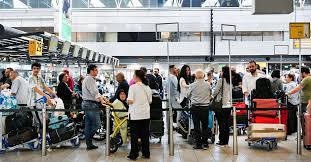
John Silcox
Things weren’t looking good for Napoleon Bonaparte in early 1815. The former emperor of France had been in exile on the small Mediterranean island of Elba for nearly a year, he was separated from his young family and his finances were dwindling. There were also rumours about his impending banishment to an even more remote island in the middle of the Atlantic.
Instead of waiting for fate, the Corsican took matters into his own hands: escaping by boat and travelling to France. He landed at Golfe-Juan on the Côte d’Azur on February 28 with 700 loyal men and started marching towards Paris over difficult terrain to avoid arrest. Despite being declared an enemy of the state and having a price on his head, he reached his destination in less than two and a half weeks. Not only that but by the time he got to the French capital, he had raised an army and retaken control of the country – against all odds.
This return is remembered as one of the greatest comebacks of all time and the path Bonaparte took through the Alpes to Grenoble – before continuing on to Paris – has also gained a certain notoriety. Known as the Route Napoleon, this 200-mile (325km) road attracts visitors from all over the world who come here to follow the emperor’s footsteps and retrace a journey that changed the course of European history forever.
A national treasure
“The Route Napoleon is a French national treasure,” explained Jérôme Viaud, the mayor of Grasse, a town best known for its perfume industry as well as being one of the main stop-offs on the Bonaparte’s journey. “It stretches from the Mediterranean Sea all the way up to the Alpes mountains, boasting an incredible diversity of landscapes, architecture, culture and history. There’s no better way to get a snapshot of our fascinating but complex country, and I invite visitors to come experience it for themselves.”

Along the way you’ll find Castellane, the drop-off point for the Gorges du Verdon canyon (Credit: Marco Groppo/EyeEm/Getty Images)
Viaud is also president of the A.N.E.R.N (Action Nationale des Elus pour la Route Napoleon), an association dedicated to linking the 42 villages, towns and cities crossed by this famous road. Among the list are several highlights such as Valluris, a seaside resort loved by jetsetters and artists such as Pablo Picasso; Cannes, the French Riviera town that hosts the famous international film festival; Castellane, the drop-off point for the Gorges du Verdon canyon; the commune of Sisteron, with its medieval jewel of a citadel; Gap, once voted the sportiest city in France; and Grenoble, the capital of the French Alpes.
We want to encourage visitors to go deeper into the French and European past by following this slower road
“The aim of the association is to link all these places through the mediums of history and storytelling,” Viaud said. “Rather than taking the motorway, we want to encourage visitors to go deeper into the French and European past by following this slower road and discovering these wonderful places. The best bit is you don’t have to follow it step-by-step; we suggest people to drop in and out as they desire – taking the opportunity to get lost in some of these wonderful surroundings.”
Far from waning, Viaud believes the appeal of the emperor is as strong as it ever was. In a recent survey carried out by his association, 74% of tourists they spoke to placed Bonaparte as the most important figure in French history.

“The Route Napoleon is a French national treasure,” says Jérôme Viaud, the mayor of Grasse (Credit: Richard Pardon)
“The image of the emperor is still very good in France today,” he added. “He remains a very popular character and inspires interest, as well as respect. When I speak to people, they are very much in awe of Napoleon, his personality, his power and what he represents in terms of order, which is something society is perhaps lacking today.”
“For me, Napoleon is fascinating because he went against the grain and achieved things that others thought were impossible – like his comeback. His political influence is still felt all throughout the French system, whether it’s the decentralisation of power to the academic and merits systems. He even set the foundations for the modern Route Nationale highway network, which is still in place today – so it’s only fitting we should celebrate this road named after him.”
Global significance
Despite being a very controversial and problematic figure (by, for example, re-instating slavery and having misogynistic views), Bonaparte has had an enduring charisma that influenced the world. His journey back to power not only changed France but it also sent shock waves much further afield.
“Napoleon’s return had a global impact,” said Kate Astbury, a professor of French studies at the University of Warwick who has deeply investigated the effects of his rule on society and culture. “The war against him stretched all over becoming more than just a battle between Britain and France. Other European nations were brought in, and it also has a very direct effect on places like the Caribbean, which becomes a hotbed of action during this era.”

Napoleon I’s return from the Island of Elba: passing through Grenoble (March 1815) – Paris, Fondation Napoléon (Credit: Photo 12/Alamy)
Bonaparte’s mind-bending comeback also stirred up questions of sovereignty – otherwise known as the authority to govern. Other European rulers were particularly worried when the people of France welcomed him home. He didn’t have royal blood nor any real legitimacy for his background in a time where monarchs were believed to get their power from God.
“In Britain, the caricaturists love his return, too, as he is making fool of the old monarchs,” Astbury explained. “Secretly, many people are delighted he is back breaking the boring old status quo. Then when he is finally defeated at Waterloo, a few months after his escape, crowds flocked to see exhibitions of his possessions and were fascinated by what he represented. He quickly becomes a bit of a cult figure.”
Natural Beauty
Today, the modern N85 road (the official name of the Route Napoleon) doesn’t quite follow the exact path Bonaparte took in 1815. Back when the emperor made his journey, there wasn’t a single tarmac route to follow, but rather a succession of tracks and pathways, as well as some cross-country excursions in some parts.
To get closer to what Bonaparte experienced himself, the best way is to set off by foot. There are quite literally thousands of pathways and hikes to follow that take walkers through quaint villages, ancient farmland, impressive geological formations and Unesco-protected natural parks and forests. The general climate is also very mild, which makes hiking very pleasant at most times of the year.
“The South-East of France is a wonderfully diverse and interesting part of the world to explore by foot,” explained Andrea Bacher, a mountain guide who specialises in the Verdon Gorges canyon and the region of Castellane. “I’ve been working here for more than 30 years, and I still discover something new each time I head out. The natural landscape is especially rich, and because a lot of this terrain is difficult to access, many things haven’t really changed in thousands of years.”

The Gorges du Verdon canyon is popular among hikers, climbers, water sports enthusiasts and nature lovers (Credit: Renan Gicquel/Getty Images)
The Gorges du Verdon canyon is a particularly popular destination for hikers, climbers, water sports enthusiasts and nature lovers. It’s an awe-inspiring rift through a high plateau which slices down to a bright turquoise river, offering up a glimpse of how the region’s current geology came to be. It is also a haven for wildlife, boasting many endemic plant species and a wide range of wild animal species – many that are rare.
“A lot of visitors are very excited when they see the spectacular wildlife – especially the vultures,” explained Bacher. “These birds were reintroduced to the area back in the 1990s and their numbers have grown rapidly. It’s quite a sight when they soar overhead, their gigantic bodies cast quite a shadow, and because of their shape and plumage, people often mistake them for eagles – which we also have living in the region and are a star attraction.”
Eagles are also a link back to Bonaparte, as it was this bird that he chose to represent his empire, taking cues from the Romans. Golden standards (flag poles mounted by a statue) depicting the French Imperial Eagle were handed out to his regiments for battle. Sadly, the popularity of these animals and their habitat in the summer months is linked to conflict today. However, Bacher says that inconsiderate visitors are leading locals to reconsider mass tourism and find more sustainable approaches to business.

Visitors come to see vultures flying over the canyon (Credit: Raymond Salmon/Getty Images)
“Since the pandemic, we are experiencing problems during the peak of the season,” she said. “The number of visitors, especially French nationals, has greatly risen during the middle of summer, and the infrastructure here is struggling to cope. Large camping cars blocking up the narrow village roads are a real problem, as is illegal parking, camping and littering. We would recommend people to come out of season if they can – things are cheaper, less busy and altogether better for the ecosystem. Coming by public transport would also be good.”
A driver’s heaven
Motoring enthusiasts will nevertheless argue that driving remains the best way to experience the Route Napoleon, with the modern stretch of tarmac – rather than the road’s imperial history – being the major attraction.
“It truly has to be the greatest driving road in France,” explained Richard Pardon, a UK-based automotive photographer who specialises in high-performance vehicles. “From dramatic corners carved into the cliffside, to open sweeping sections that run through a forest, the Route Napoleon has it all. It’s a bucket list drive with 180-degree switchbacks, hairpins, tunnels, bridges and quaint villages ideal for a lunch stop, that offer views out onto deep gorges filled with gleaming water.”
It truly has to be the greatest driving road in France
Pardon first visited Route Napoleon in 2015 and was blown away by the gravity-defying road he discovered. He has since made frequent trips down to the South of France to capture dramatic driving pictures for magazines and luxury car manufacturers.
“I’ve shot here five times now, but it still never gets old,” he said. “The landscape changes from North to South, each vista as beautiful as the rest. Whereas most mountain passes are usually tight and technical, the Route Napoleon flows. It showcases the characteristics of a car, all whilst taking in the stunning scenic views. That’s not to say a local in a Fiat Panda won’t put your Lamborghini to shame around one of the narrow twisty sections.”
The Route Napoleon is a bucket list drive through France (Credit: Richard Pardon)
As a photographer, Pardon usually looks for scenic roads, bathed in good light and with good sightlines, that are quiet enough to work on safely. For him, the Route Napoleon has everything and can showcase a variation of landscape in a short distance, which helps convey the sense of journey through pictures. The good weather also makes it a year-round destination.
“There’s a particular stretch of road just off Route Napoleon that runs to a small ski resort, and in the summer months, it’s almost deserted with long sweeping switchbacks that rise up and over the mountain until you reach a forest. It’s ideal for car-to-car photography, so much so that the iconic Aston Martin DB5 versus Ferrari 355 James Bond car chase in GoldenEye was filmed here.”
Interestingly, James Bond’s creator Ian Fleming was fascinated by the French emperor and frequently referenced Bonaparte and his rival, British general Arthur Wellesley, in his work. Most Bond baddies in fact all suffer from a Napoleonic complex – otherwise known as a desire to rule the world.
Regardless of whether you consider the French ruler a hero or a villain, it’s easy to understand why retracing this stretch of road is incredibly revealing about Bonaparte and those who followed him. And whether you come down for the history, the culture, the nature or the tarmac: it’s all worth the visit. Just try not to get any ideas about global domination…
The post Napoleon’s gravity-defying 325km road appeared first on The Frontier Post.



